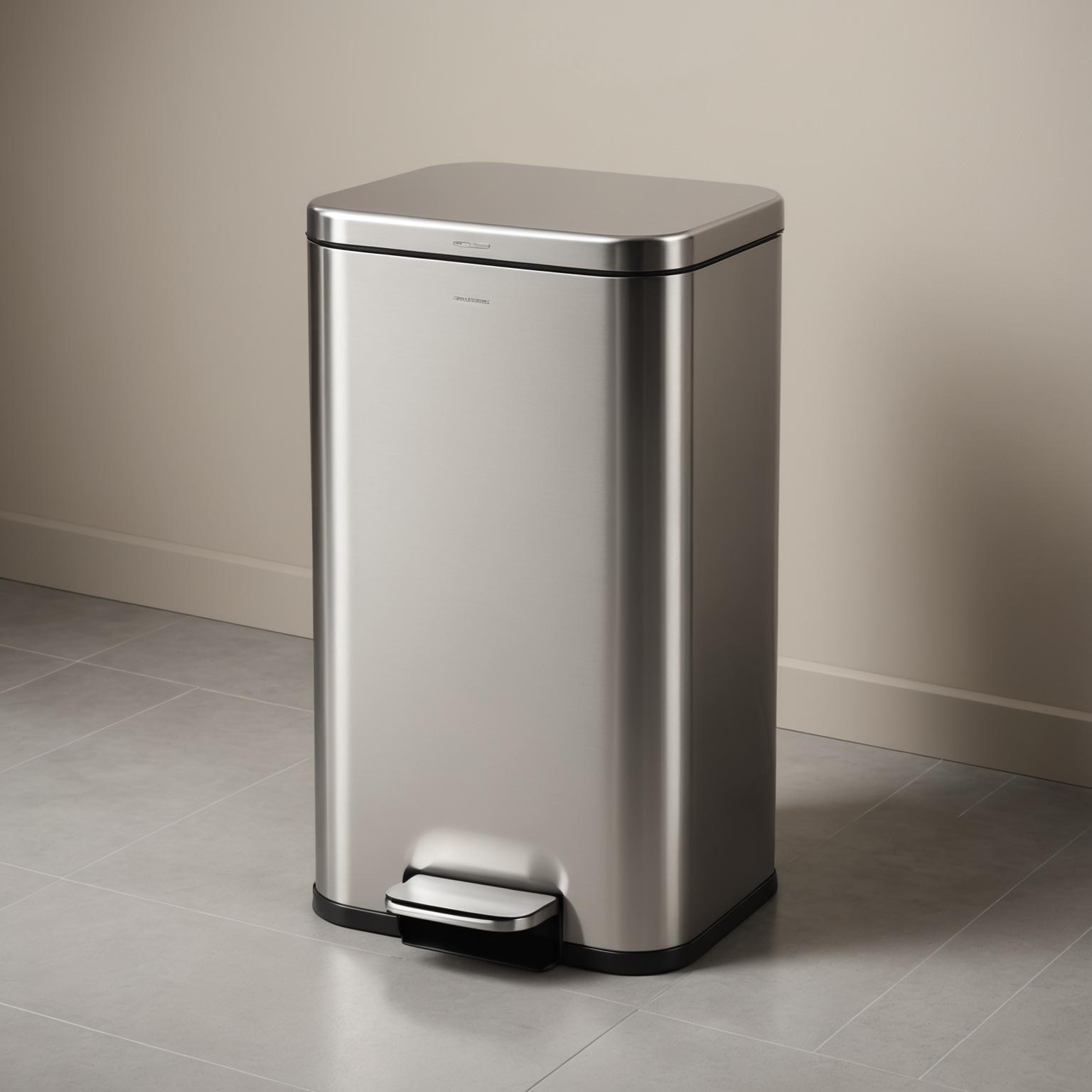When upgrading your home or office with modern fixtures, even an everyday item like a garbage bin deserves careful consideration. Stainless steel is a popular choice for its sleek look and durability, but not all stainless steel is created equal. A common question that arises during the selection process is, is 304 or 201 better for stainless steel trash cans? The answer lies in understanding the fundamental differences between these two common grades, as the right choice can significantly impact the longevity, appearance, and overall value of your purchase.
What Are Stainless Steel Grades 201 and 304?
Before diving into a direct comparison, it's helpful to understand what these numbers mean. Stainless steel is an iron alloy that contains a minimum of 10.5% chromium. This chromium creates a thin, passive layer of chromium oxide on the surface, which prevents rust and corrosion. The different grades, like 201 and 304, refer to variations in the chemical composition of the alloy, which in turn affects its properties. Grade 304 is the most common and versatile type of stainless steel, often referred to as 18/8 stainless steel because it typically contains 18% chromium and 8% nickel. This high nickel content is crucial for its superior corrosion resistance and formability. On the other hand, Grade 201 is part of a series of austenitic stainless steels developed to be a lower-cost alternative. It achieves this by substituting a portion of the expensive nickel with more affordable elements like manganese and nitrogen. While this makes it more budget-friendly, it comes with important trade-offs in performance.
Corrosion and Rust Resistance: The Deciding Factor
For an item like a trash can, which is frequently exposed to moisture, food waste, and cleaning agents, corrosion resistance is arguably the most important attribute. This is where the difference between the two grades becomes most apparent. The higher chromium and, critically, higher nickel content in the 304 grade give it exceptional resistance to rust and corrosion from a wide range of elements. It can withstand splashes, humidity from a kitchen or bathroom, and contact with acidic or salty food scraps without tarnishing or developing rust spots. This resilience is what makes it the standard for food-grade equipment, kitchen sinks, and high-quality appliances. In contrast, the 201 grade is significantly more susceptible to corrosion. Its lower nickel content means the protective chromium oxide layer is less robust and can break down more easily, especially in moist or chloride-rich environments. A waste container made from 201 steel might look pristine initially but could start showing signs of pitting or rust over time, particularly around seams or if scratched. For a long-lasting, low-maintenance product, grade 304 stainless steel is the clear winner.
Comparing Durability and Formability
In terms of pure hardness, the 201 grade often has a slight edge due to its higher nitrogen content. This can make it more resistant to dents and dings in some applications. However, this hardness comes at the cost of ductility. Grade 304 is more ductile, meaning it can be more easily formed, bent, and drawn into complex shapes during manufacturing without cracking. This quality allows for the creation of sleeker, more refined designs with smooth curves and seamless construction. For a well-designed waste receptacle with features like a fitted lid and intricate pedal mechanisms, the excellent formability of 304 is a significant advantage. While both materials are strong enough for the daily demands of a household garbage bin, the superior manufacturing properties of the 304 alloy often translate into a better-finished and more structurally sound final product.
The Price Point: Is 201 a Worthy Budget Option?
The primary appeal of 201 stainless steel is its lower cost. Since nickel is a relatively expensive commodity, reducing its content allows manufacturers to produce items at a more accessible price point. This can be tempting for budget-conscious consumers. However, it is essential to consider the total cost of ownership. A trash can made from 201 steel might be cheaper upfront, but it may need to be replaced sooner due to rust or deterioration. The need for more careful cleaning to prevent rust can also add to its long-term maintenance effort. Investing a little more in a product made from 304 steel often proves more economical in the long run, as it will maintain its appearance and structural integrity for many years, offering greater value and peace of mind.
Making the Right Choice for Your Home
So, when you are deciding between these materials for your waste bin, the environment of use is key. For dry areas with low humidity and minimal exposure to corrosive substances, a 201 stainless steel bin might suffice. However, for most typical applications, especially in kitchens, bathrooms, or any area where moisture is present, the choice is clear. The superior corrosion resistance, excellent formability, and long-term durability of grade 304 make it the far better investment. A premium trash can made from this material will not only resist rust and stains but will also elevate your space with its lasting quality. When shopping, look for products that specify they are made from high-quality, premium-grade stainless steel, as this almost always indicates the use of the 304 grade, ensuring you receive a product built to last.








